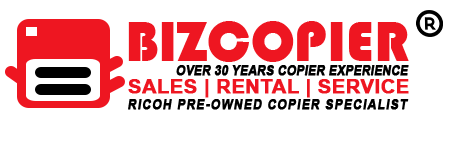The Managed Print Services experts at Loffler are available to provide printer assessments for your organization. Here are three high-cost printer mistakes Managed Print Services can solve. Mistake #1: Multiple Departments Handle Their Own Printers Is each department in your organization ordering or buying toner from different suppliers? Similarly, is printer purchasing handled separately from service and support, creating a situation where each department is buying printers from different vendors, and then calling different companies for service? What about all the times your IT team gets called when a printer won’t work? With a Managed Print Services program, toner, service, and printer acquisition are managed by one vendor, cutting costs by sometimes up to 30%. An MPS program also saves your IT team from handling printer service calls, giving them more time to focus on much more important projects and initiatives. Mistake #2: Not Tracking Printing Usage If you don’t track individual printer use, you don’t know what you’re spending. Impromptu or decentralized spending causes many businesses to lose track of printing costs, so they don’t know where or how much money is being spent on printers. With one centralized printer tracking system you have a much better understanding of how much printing is costing your organization. This information can help devise a plan to cut or reduce wasteful printing with a more controlled printing plan, which in turn cuts costs. A Managed Print Services (MPS) program provides print tracking. You not only see what you’re printing, but also which printers are utilized most and how they’re being used. Mistake #3: Not securing printers Printers need to be secure. Left unsecured, they’re an access point for hackers. With today’s dependence on technology, it is no longer a question of if, but when, there will be a data breach. Research shows that over 60% of businesses surveyed have suffered data loss from unsecured printers at least once. Businesses take steps to protect data on computers and servers, but often forget network printers. Office printers are often infected with malware and are vulnerable to cyberattacks. Some businesses think that printers are at minimal risk for a security breach; this is simply not true. The threat is real. Hackers will use unsecured printers to access sensitive data or send infected messages. If it connects to your network, it is at risk and should be secured. The Managed Print Services experts at Loffler are available to provide printer assessments for your organization. Here are three high-cost printer mistakes Managed Print Services can solve. Mistake #1: Multiple Departments Handle Their Own Printers Is each department in your organization ordering or buying toner from different suppliers? Similarly, is printer purchasing handled separately from service and support, creating a situation where each department is buying printers from different vendors, and then calling different companies for service? What about all the times your IT team gets called when a printer won’t work? With a Managed Print Services program, toner, service, and printer acquisition are managed by one vendor, cutting costs by sometimes up to 30%. An MPS program also saves your IT team from handling printer service calls, giving them more time to focus on much more important projects and initiatives. Mistake #2: Not Tracking Printing Usage If you don’t track individual printer use, you don’t know what you’re spending. Impromptu or decentralized spending causes many businesses to lose track of printing costs, so they don’t know where or how much money is being spent on printers. With one centralized printer tracking system you have a much better understanding of how much printing is costing your organization. This information can help devise a plan to cut or reduce wasteful printing with a more controlled printing plan, which in turn cuts costs. A Managed Print Services (MPS) program provides print tracking. You not only see what you’re printing, but also which printers are utilized most and how they’re being used. Mistake #3: Not securing printers Printers need to be secure. Left unsecured, they’re an access point for hackers. With today’s dependence on technology, it is no longer a question of if, but when, there will be a data breach. Research shows that over 60% of businesses surveyed have suffered data loss from unsecured printers at least once. Businesses take steps to protect data on computers and servers, but often forget network printers. Office printers are often infected with malware and are vulnerable to cyberattacks. Some businesses think that printers are at minimal risk for a security breach; this is simply not true. The threat is real. Hackers will use unsecured printers to access sensitive data or send infected messages. If it connects to your network, it is at risk and should be secured. *Other Model AvailableRICOH MPC3503/ MPC5503 | RICOH MPC3504/ MPC5504 CONTACT US: 03-3341 6296 | 018-788 6296 | 018-228 6296

Recent Comments